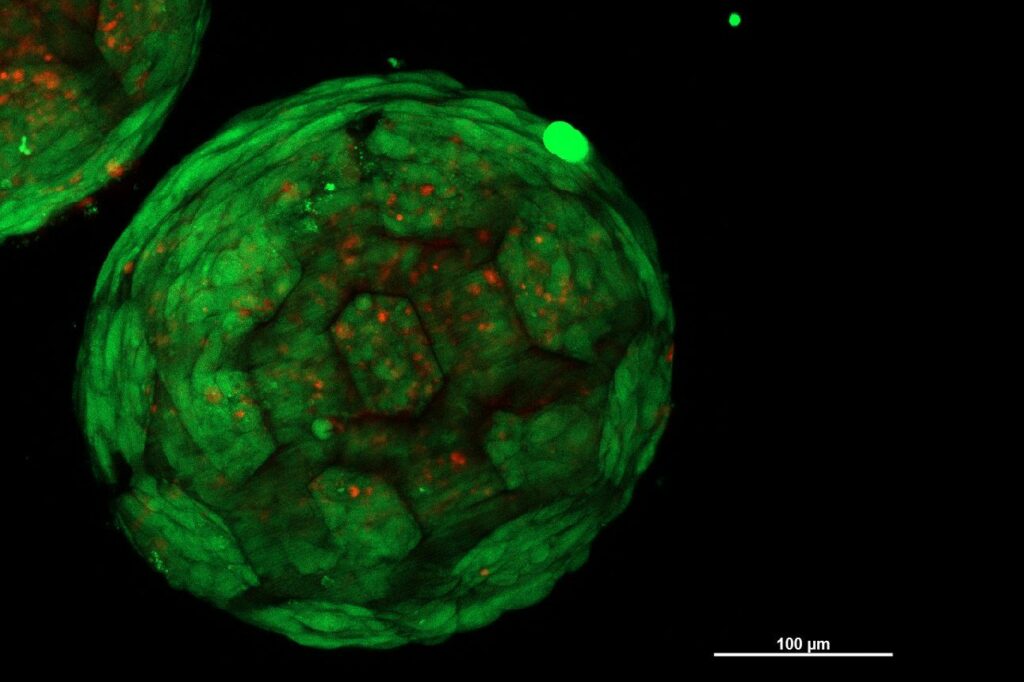Cluster members from Vienna have once again made headlines with their innovative approach to tissue engineering using 3D-printed “mini soccer balls.” These tiny spheres are capable of growing into large tissue structures and can potentially be used for medical applications within the body.
The team from the Technical University (TU) Vienna, led by Aleksandr Ovsianikov, has been exploring the use of biocompatible materials shaped like soccer cages, which are then colonized by cells, for several years. Their recent study, published in the journal “Acta Biomaterialia,” demonstrates the successful formation of larger tissue units using this modular system.

Creating replacement tissues from the patient’s own cells is a common goal in regenerative medicine. However, one of the challenges has been controlling the shape of the resulting tissue. According to Oliver Kopinski-Grünwald from the Institute of Materials Science and Technology at TU Vienna, cultivating cartilage cells from stem cells is not the biggest challenge; the main issue lies in controlling the shape of the tissue.
The key to the team’s success lies in the unique structure of the miniature soccer balls. These porous structures, resembling soccer cages, provide a scaffold for cell colonization. Despite their small size, the balls seamlessly merge into larger structures, facilitating the formation of cohesive tissue without visible interfaces between neighboring cell clusters.
Over time, the spherical support structures are naturally degraded within the body, while the artificial tissue matures and maintains its desired shape. The researchers envision the production of customized cartilage tissue pieces for transplantation, with future applications extending to the creation of larger bone tissues.
This breakthrough method opens new possibilities for tissue engineering and regenerative medicine, promising advancements in the treatment of cartilage and bone injuries. The research on this breakthrough has been featured in both ORF and Der Standard, highlighting its significance in the field of tissue engineering.